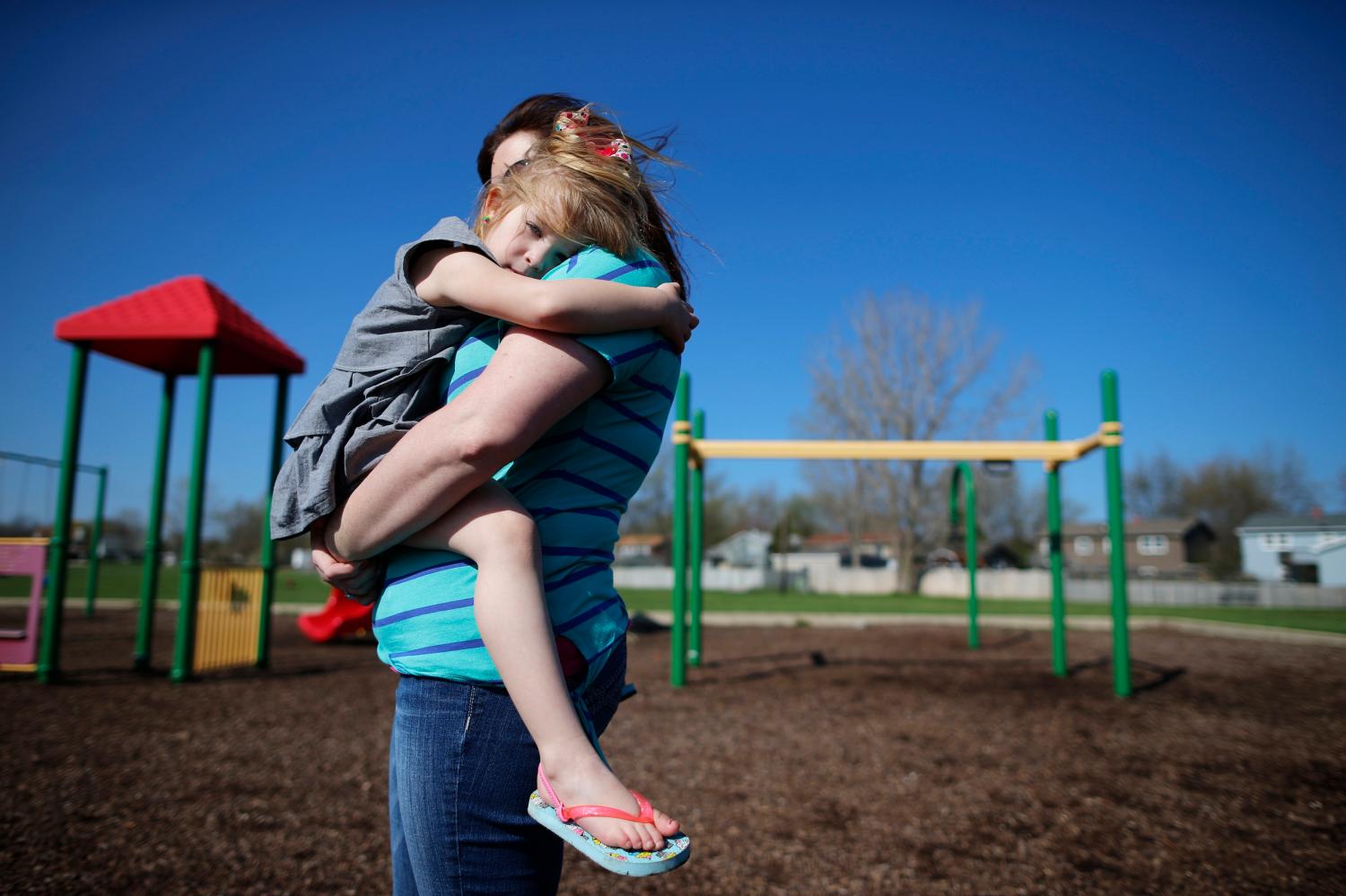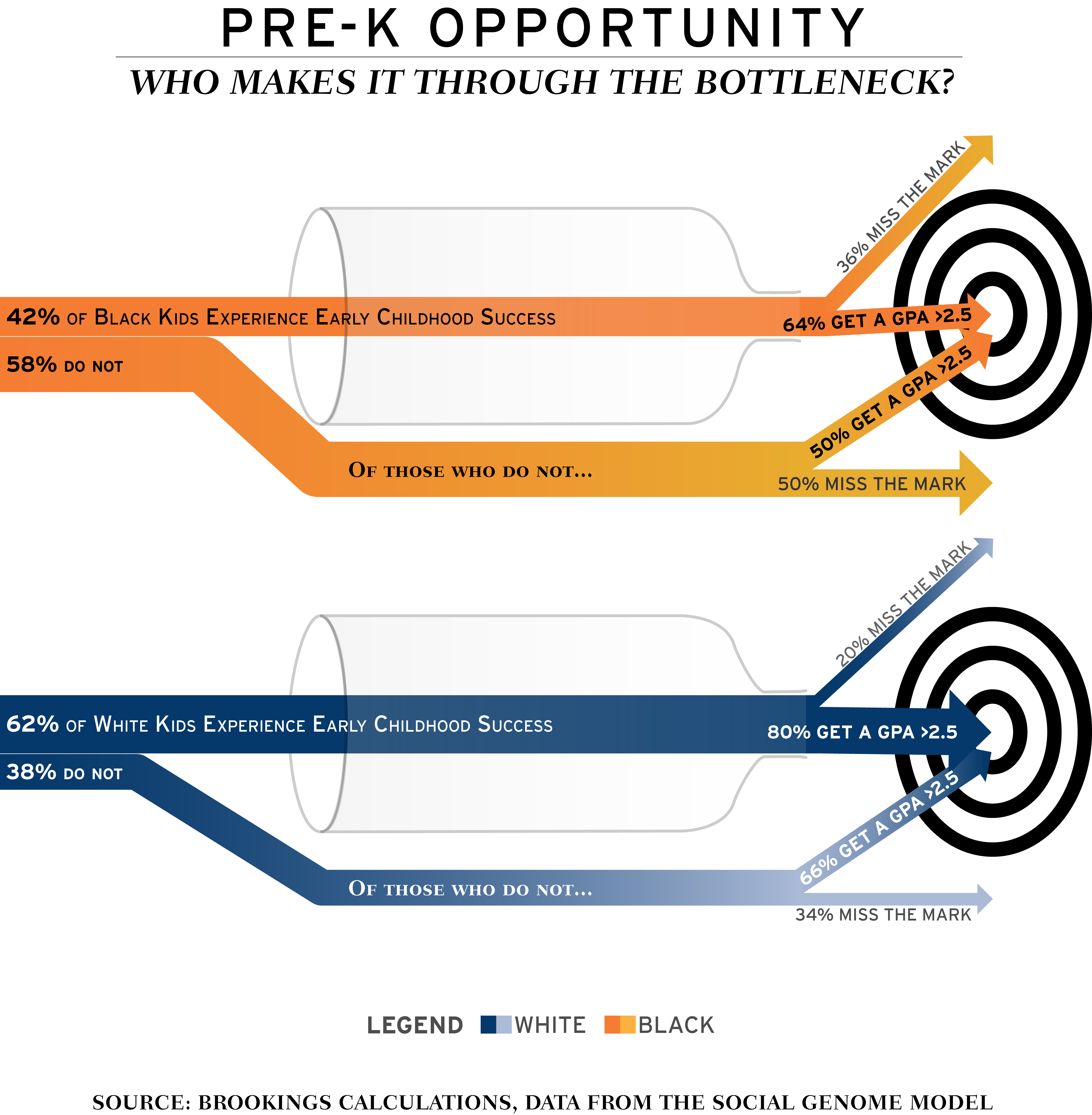Note: Part of a two-week series devoted to exploring what we can learn about social mobility from Joseph Fishkin’s new book, Bottlenecks.
Joseph Fishkin calls for a shift in focus from equalizing opportunity to pluralizing opportunity, in part through the loosening of bottlenecks.
Bottlenecks are “narrow places through which people must pass if they hope to reach a wide range of opportunities that fan out on the other side.” Fishkin identifies three types of bottlenecks, relating to developmental opportunities, qualifications, and instrumental goods. We are going to look at one of each, in particular in terms of race gaps in the American opportunity structure.
Developmental Bottlenecks
Fishkin defines developmental bottlenecks as:
“Critical developmental opportunities through which people must pass if they are to develop important abilities or skills that they will need to pursue many of the paths their society offers.” (Fishkin, Bottlenecks, p. 14)
Developmental opportunities occur throughout life and may relate to good parenting, high-quality schools, and access to good role models. They are often also mutually reinforcing: failing to pass through one bottleneck often lessens the chances of getting through another, and so on.
Race Gaps in Early Years Development
Wide gaps in developmental opportunities during the critical early years signal the existence of an important bottleneck. A child who has had access to adequate developmental opportunities should be school-ready by school age. There are in fact large gaps between black and white children on this measure:
Six out of 10 white children pass through the bottleneck of adequate early years development (which we define with a variety of cognitive and non-cognitive benchmarks), compared to 4 in 10 black children.
Passing through this bottleneck strongly predicts completing high school with a GPA of at least 2.5. Of course, high school grades can act as a bottleneck, too, since they influence college entry, career options, and so on. Development begets development.
The bottlenecks in the American opportunity structure are not color blind. Black children are less likely to get through the bottlenecks; less likely, even when they do, to reap the same rewards as white children; and less likely to get around the bottlenecks – or to put it differently, to succeed at the next stage after failing at this one. So the problem of developmental bottlenecks is tightly linked to issues about racial equality, and targeted interventions such as President Obama’s My Brother’s Keeper Initiative will likely be needed to reduce these race-based disparities.
Loosening Developmental Bottlenecks
We need to find more ways both through and around the bottleneck:
- Improve Parenting: Policies can be designed to narrow the “parenting gap.” Language acquisition is a case in point. The class gap in language exposure – adding up to about 30 million words by age 4 – represents a serious developmental bottleneck. Programs like the Thirty Million Words Initiative can significantly increase low-income children’s language exposure.
- More Educational “on-ramps”: Students often have a hard time catching up when they fall behind academically. More kids can get around the early years bottleneck through programs such as the Talent Development model or a range of promising college readiness bridge programs.
The Brookings Institution is committed to quality, independence, and impact.
We are supported by a diverse array of funders. In line with our values and policies, each Brookings publication represents the sole views of its author(s).






Commentary
Bottleneck 1: Early Years Development
May 6, 2014